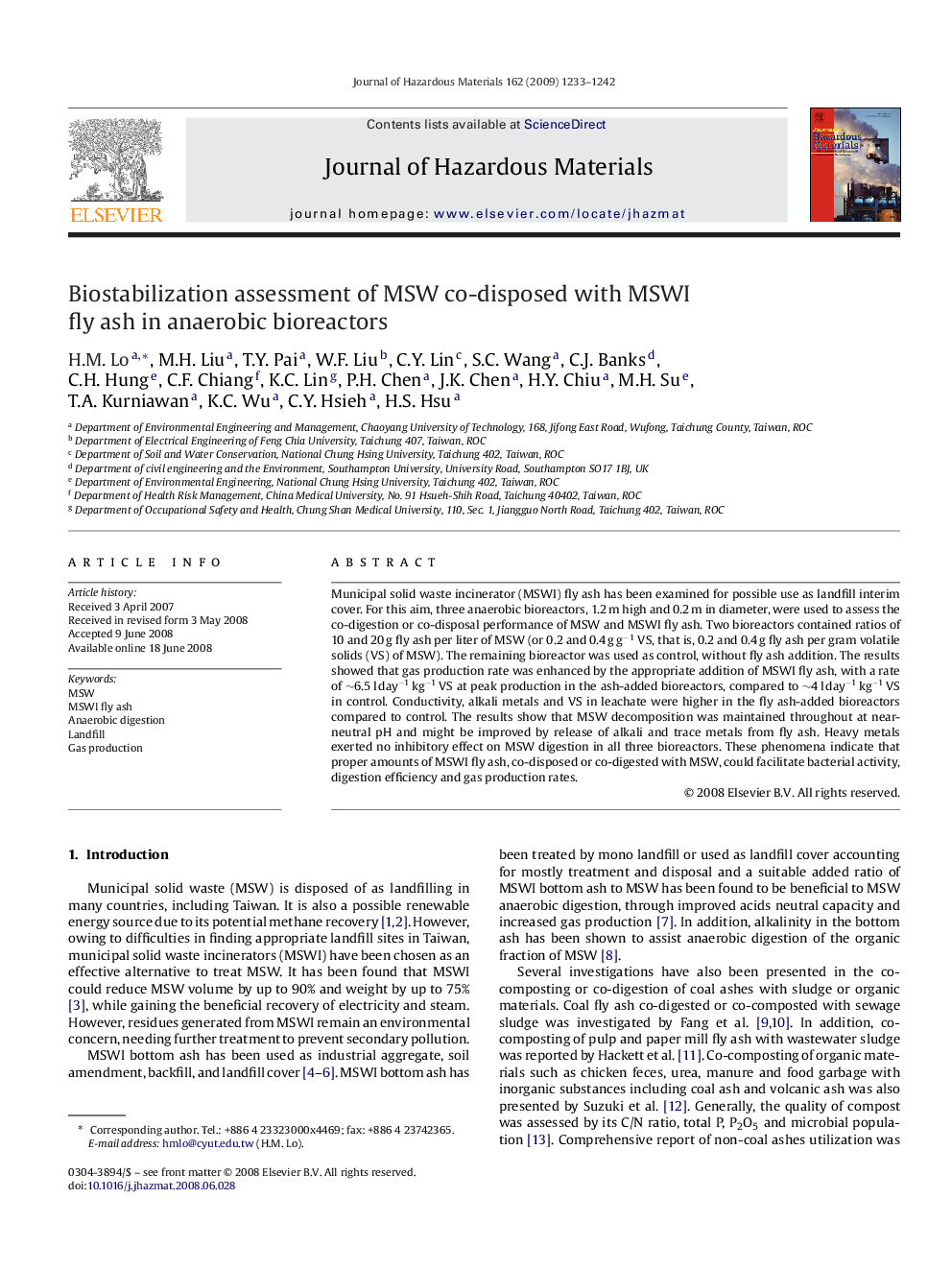| Article ID | Journal | Published Year | Pages | File Type |
|---|---|---|---|---|
| 582428 | Journal of Hazardous Materials | 2009 | 10 Pages |
Abstract
Municipal solid waste incinerator (MSWI) fly ash has been examined for possible use as landfill interim cover. For this aim, three anaerobic bioreactors, 1.2 m high and 0.2 m in diameter, were used to assess the co-digestion or co-disposal performance of MSW and MSWI fly ash. Two bioreactors contained ratios of 10 and 20 g fly ash per liter of MSW (or 0.2 and 0.4 g gâ1 VS, that is, 0.2 and 0.4 g fly ash per gram volatile solids (VS) of MSW). The remaining bioreactor was used as control, without fly ash addition. The results showed that gas production rate was enhanced by the appropriate addition of MSWI fly ash, with a rate of â¼6.5 l dayâ1 kgâ1 VS at peak production in the ash-added bioreactors, compared to â¼4 l dayâ1 kgâ1 VS in control. Conductivity, alkali metals and VS in leachate were higher in the fly ash-added bioreactors compared to control. The results show that MSW decomposition was maintained throughout at near-neutral pH and might be improved by release of alkali and trace metals from fly ash. Heavy metals exerted no inhibitory effect on MSW digestion in all three bioreactors. These phenomena indicate that proper amounts of MSWI fly ash, co-disposed or co-digested with MSW, could facilitate bacterial activity, digestion efficiency and gas production rates.
Related Topics
Physical Sciences and Engineering
Chemical Engineering
Chemical Health and Safety
Authors
H.M. Lo, M.H. Liu, T.Y. Pai, W.F. Liu, C.Y. Lin, S.C. Wang, C.J. Banks, C.H. Hung, C.F. Chiang, K.C. Lin, P.H. Chen, J.K. Chen, H.Y. Chiu, M.H. Su, T.A. Kurniawan, K.C. Wu, C.Y. Hsieh, H.S. Hsu,
